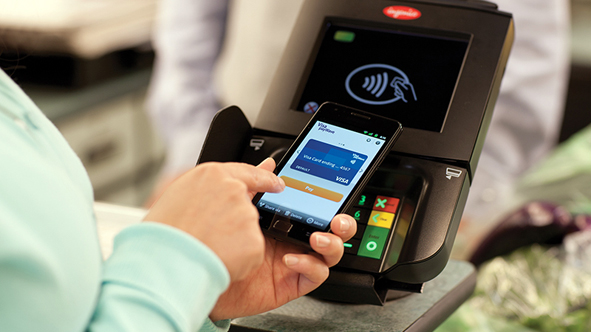Contactless terminal shipments to grow at 13%, says Berg
- May 12, 2020
- imc

Shipments of contactless-payment-ready PoS terminals reached 47.8 million in 2019, according to IoT analyst firm Berg Insight, which predicts a CAGR of nearly 13 per cent till 2024.
The attach rate for NFC (near-field communications) was highest in EU28+2 and North America, where 94 per cent of the PoS terminals shipped featured NFC. NFC was also a very popular feature in other major markets worldwide, including Brazil, Turkey and China.
On a global basis, about 70 per cent of the PoS terminals shipped in 2019 included NFC.
Berg projects the global installed base of NFC-ready PoS terminals will grow at a compound annual growth rate of 12.9 per cent from 100.4 million units in 2019 to 184.5 million units in 2024. As a result, more than 88 per cent of the world’s PoS terminals will be NFC-ready in 2024, up from 62 per cent in 2019.
While the installed base of NFC-ready PoS terminals has grown quickly, the contactless technology has in some cases not been activated. Berg estimates that approximately 70 million PoS terminals accepted contactless payments with Visa PayWave, Mastercard PayPass or UnionPay Quickpass at the end of 2019.
“The mPoS terminal market is growing faster than the traditional PoS terminal segment and there are more than 70 vendors active on the global market today,” said Johan Fagerberg, principal analyst at Berg Insight.
MPoS is the use of consumer-oriented mobile devices such as tablets and smartphones that function as a point-of-sale terminal to facilitate payment card transactions through a connection to a card-accepting reader. The attach rate for NFC in the mPoS segment reached 64 per cent in 2019 as NFC-ready mPoS terminal shipments reached 24.7 million units.
Berg forecasts that global shipments of NFC-ready mPoS terminals will grow at a CAGR of 12.7 per cent in the next five years to reach 44.9 million units by 2024.
“The growth is driven by the increase in mPoS terminal shipments from 38.3 million units in 2019 to 46.7 million units in 2024, as well as by a growth in the attach rate from 64 to 96 per cent,” said Fagerberg.





